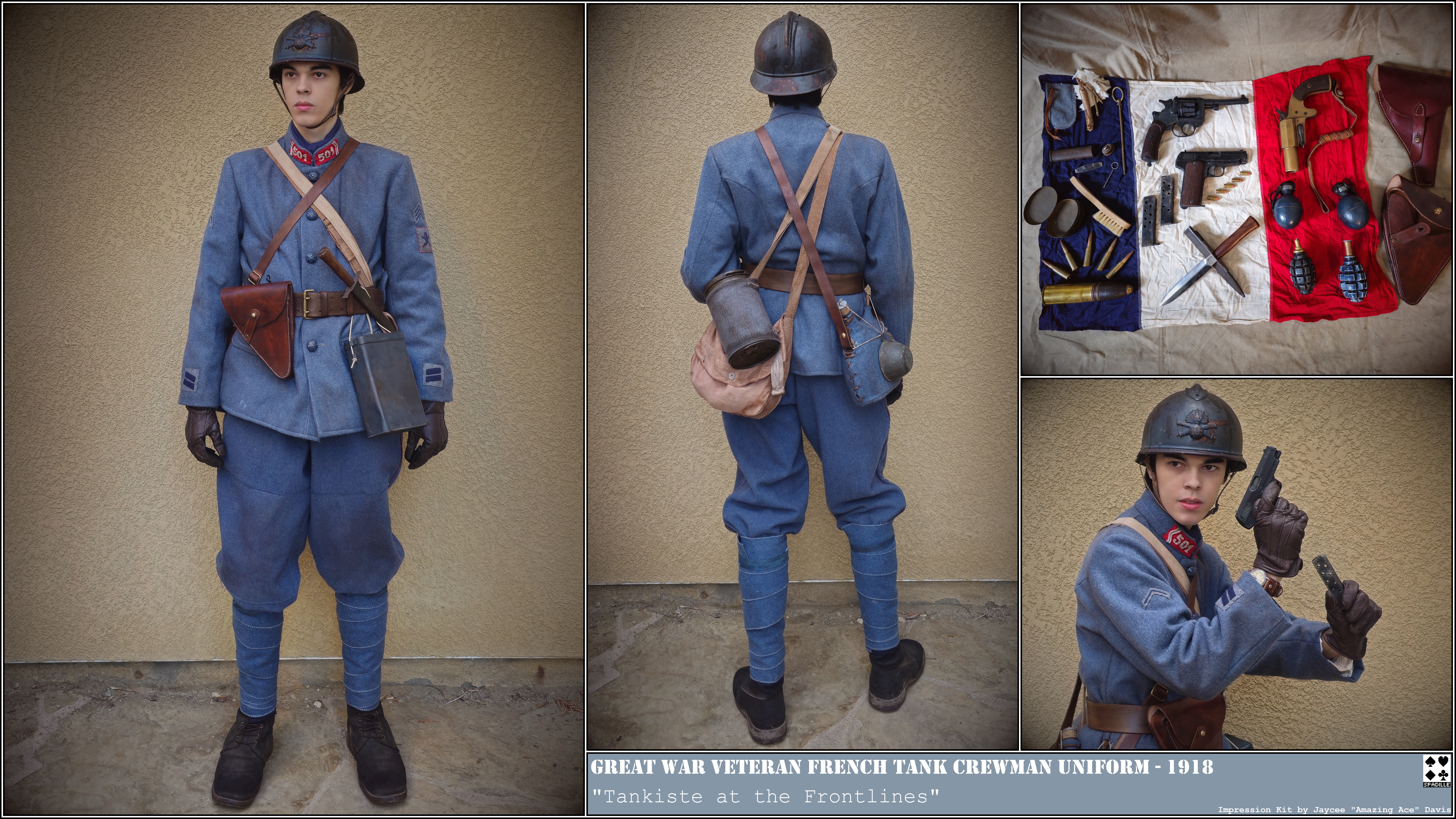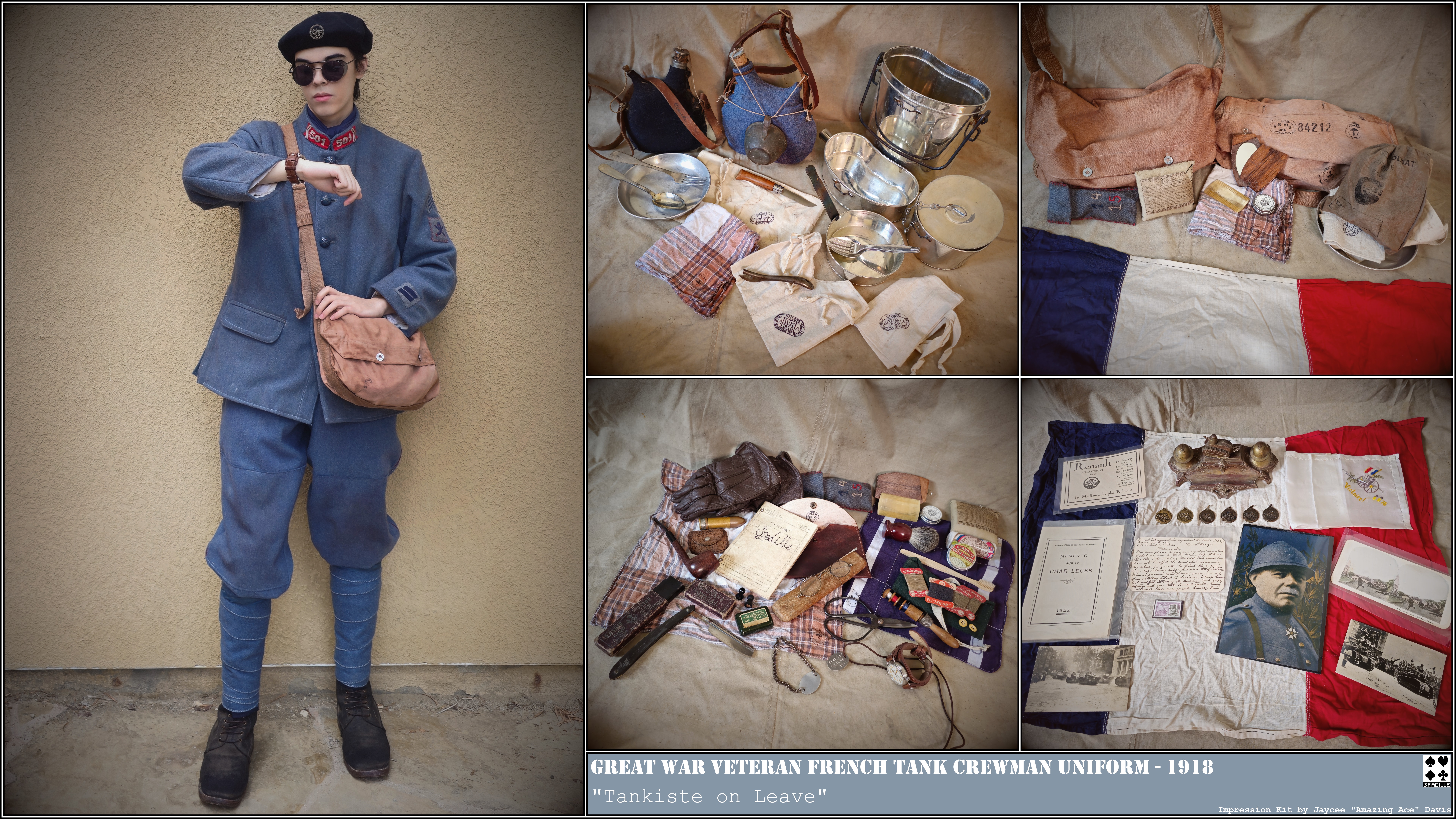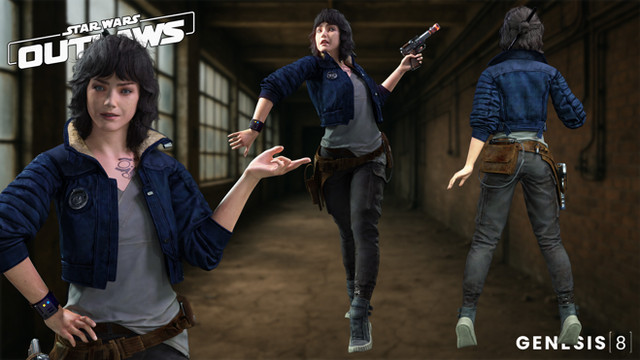HOME | DD
 Amazing--Ace — Tankiste at the Frontlines
by-nd
Amazing--Ace — Tankiste at the Frontlines
by-nd

#gear #history #reenacting #reenactment #reenactor #uniform #wwi #loadout #ww1
Published: 2024-01-26 17:46:50 +0000 UTC; Views: 1838; Favourites: 30; Downloads: 6
Redirect to original
Description
This is an impression of a French tank crewman on the frontline. One may see this uniform on tankiste fighting outside their vehicle or inside the vehicle if it was a particularly hot day. Immediately one can see the iconic light blue color of the wool uniform, nicknamed horizon blue. This color was created out of necessity to replace the previous blued steel grey and madder red uniform of 1870. By 1917 the light blue uniform was standardized in terms of color, weight, and weave - though variations in shade still existed due to the use of natural dyes and how they react to wear.
The Vareuse Modèle 1915 (tunic) tells us many things about the wearer. The regimental collar tabs show that he is from the 501e Régiment d’Artillerie Spéciale (Special Artillery Regiment - RAS). This was the first regiment raised to incorporate the new Renault FT tank on May 13th, 1918. This tank would soon become the main tank of the French Army through the remainder of the Great War. This regiment would also be the first to use the Renault FT in combat on May 31st, 1918 during the French counterattack at the Chemin des Dames. Despite this very short time frame from unit creation to battle, the few tanks that took part in the battle would help crush the German assault during their Spring Offensive for good.
The Artillerie Spéciale, as the name suggests, was considered to be a branch of the artillery. Thus, the regimental tabs on the standing collar are in scarlet red like the artillery. They are differentiated from standard artillery through their regimental numbers and braiding, which are in ash grey.
On his left arm is a two year frontline presence chevron and AS specialty insignia tab. The frontline service chevron is granted with the first chevron denoting one year on the frontline with subsequent chevrons added denoting half a year on the frontline. The same chevron style was worn on the right arm which denoted wounds suffered, in this case the wearer has received one. The official AS insignia was a knight’s helmet over two crossed cannons, and this would be the regulation specialty insignia given to tank crews. Private purchase options would exist such as one resembling the silhouette of a Renault FT, for example.
The rank tab is placed at the cuff, in this case the rank of Corporal can be seen. The rank of Corporal would often mean the tankiste was a tank commander of a single tank versus a half section tank commander (leading two tanks) or section tank commander (leading five).
The Pantalon-Culottes Modèle 1915 (breeches) are identical to those worn within the artillery with scarlet red piping. The breeches end at the knee and are worn in tandem with Bandes Molletières Modèle 1915 (puttees - leg wraps). This breeches variant has an additional layer of wool over the knees to strengthen the garment from abrasion.
Standard issue tank crew weaponry was either an Ordnance Revolver Modèle 1892, available to officers, or Pistolet Automatique de 7 millim.65 genre “Ruby.” These would be worn in a leather holster placed on the front right side of the Ceinturon Modèle 1903 modifié 1914 (field belt). Tankiste would be issued three magazines for the Ruby pistol with one loaded into the weapon and the remaining two placed in pouches inside the holster. On the left of this would be the Couteau Poignard Modèle 1916 “Le Vengeur” (combat knife/dagger) in its metallic sheath. This knife proved popular to wear among the tankiste by 1917 and by 1918 it would become regulation to wear the knife on the left front of the field belt. Additionally, grenades may be placed in the Étui-Musette Modèle 1892 (bread bag). Also shown are the various weapon cleaning kit pieces the tankiste could be seen to have. This includes the Boîtes à Graisse Modèle 1886 (double sided grease tin), Nécessaires d'Arme Modèle 1874 (weapon tool and oiler), Brosse d’Armes (gun brush), Ficelle de Nettoyage (pull through), and Revolver cleaning rod. The rifle pull through is pictured here because it was not uncommon for tankiste to grab a rifle from the infantry if their tank broke down or was knocked out to continue to fight on foot.
Related content
Comments: 2

👍: 1 ⏩: 1

👍: 1 ⏩: 0

























